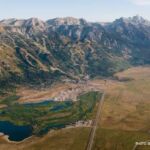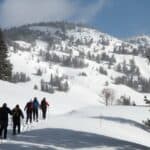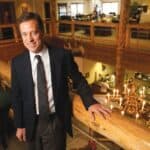Read The
Current Issue
Dinner and a [Star] Show
After more than a decade of planning and construction, there’s a research-grade telescope open to the public, a planetarium, and a celestial-inspired fine dining restaurant on the summit of Snow King Mountain.
// by lila edythe
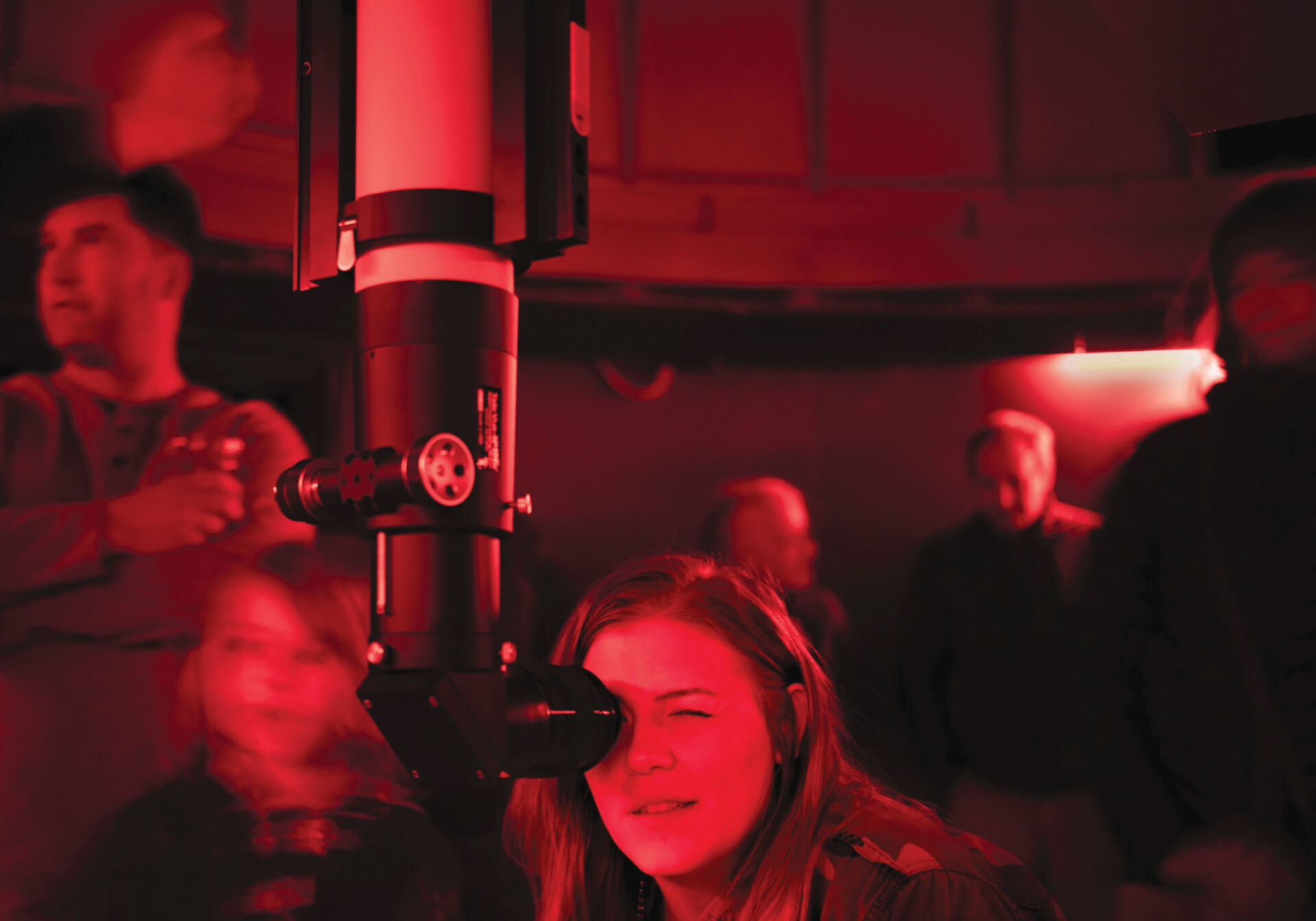
The new observatory and planetarium on the summit of Snow King Mountain, which was Wyoming’s first ski area when it opened in 1939 and rises 1,500 feet above downtown Jackson, aren’t just unique among ski areas, but in the world. “There are phenomenal observatories dedicated to scientific research and planetariums that offer entertainment for the public, but the marriage of these two things into one facility that is used by both researchers and the public is something I’m not aware exists anywhere else in the world,” says Joe Zator, the director of the Snow King Observatory and Planetarium.
The facts that SKOP is 1) reached by taking a scenic gondola ride to Snow King Mountain’s 7,808-foot summit; 2) has stellar (pun intended) views of four mountain ranges, including some the valley’s best views of the Tetons; and 3) can be experienced before or after a snack, lunch, or dinner at a new summit restaurant, Aurora, are bonuses.
All of this was enough to entice Zator to leave the University of Colorado Boulder, where he worked at the Fiske Planetarium and as a researcher at the university’s Laboratory for Atmospheric and Space Physics (he worked on the MAVEN mission to Mars, an orbiter with an imaging ultraviolet spectrograph to explore the planet’s upper atmosphere), to move to Jackson and be the facility’s director. “It was a dream of dreams—a once-in-several-lifetimes opportunity,” he says.
SKOP isn’t only a special opportunity for Zator, but also for locals and visitors to Jackson Hole. While SKOP has many parts, its heart is its 1.0-meter PlaneWave telescope, which is housed in a 24-foot AstroHaven dome. This telescope is one of the largest state-of-the-art telescopes in the world dedicated primarily to public outreach. It’s so state-of-the-art that it’s also used for research by scientists across the country and around the world. “There are nights that are just for research and other nights primarily for the public,” Zator says. When asked how far the telescope can see, Zator’s answer is simple: “All the way.”
But there is more to see at SKOP than space. “To me, the beauty of the facility is how many different possibilities we have for people to experience it,” Zator says. “It has so much potential—you can be entertained by films and stargazing in the planetarium and Science on a Sphere, look through a solar telescope and see activity on the surface of the sun, and/or go into the classroom for a talk about black holes. It’s pick and choose for what you’re interested in. Science nerds can stay for four hours, and other people might want just an hour.”
To me, the beauty of the facility is how many different possibilities we have for people to experience it. It has so much potential—you can be entertained by films and stargazing in the planetarium and the Science on a Sphere, look through a solar telescope and see activity on the surface of the sun, and/or go into the classroom for a talk about black holes.”
—Joe Zator, Snow King Observatory and Planetarium director
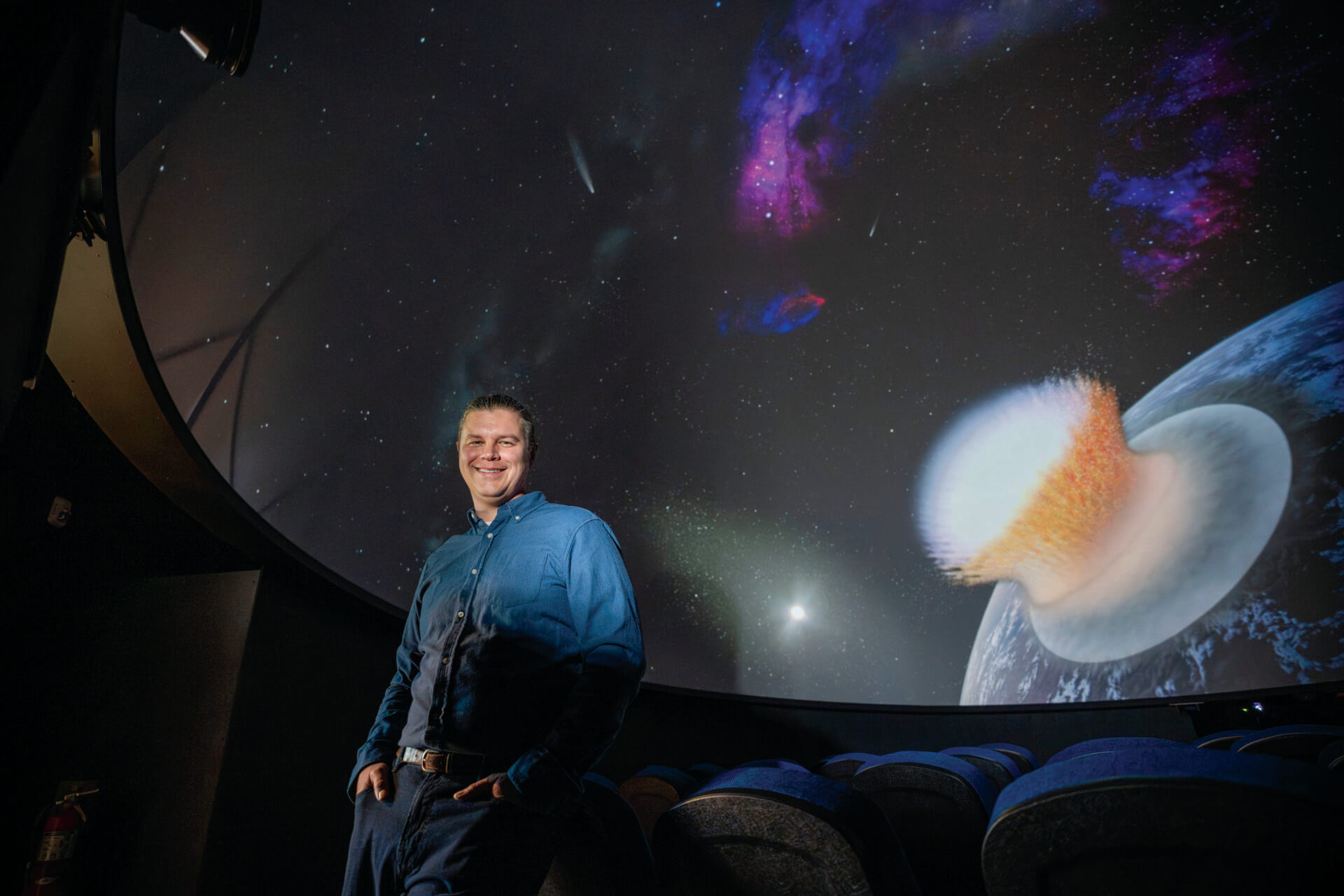
Visitors to the 38-seat planetarium can watch space-related IMAX films, or, more popular, tour the constellations and solar system and admire images of deep space taken by SKOP’s telescope. The night sky is projected onto the 26-foot diameter 360-degree screen and, to help you identify constellations, line drawings are superimposed over the stars that make up the constellation. Then there’s the opportunity to “blast off” from the surface of Earth and fly to visit other planets. “We might fly over the moon and talk about the Artemis missions and then over to Mars and talk about Olympus Mons and volcanoes,” Zator says. “And then we’ll ask the audience where they want to go.” The rings of Saturn are a frequent request.
The planetarium is open during the day and at night. A night visit to SKOP includes time in it and also time with SKOP’s telescopes; in addition to the PlaneWave, there are five additional (smaller) telescopes that the observatory’s astronomers set up on the open-air observing deck adjacent to the dome. “You have the ability to try many different telescopes and float in and out of the dome and see as many objects as you possibly can,” Zator says.
It is entirely coincidental that the name of the new restaurant—opened this past winter—that shares the summit with SKOP is the same as that of Zator’s young daughter: Aurora. The restaurant’s name is a nod to the fact that it is possible you might see the Aurora Borealis—aka the northern lights—through its wall of north-facing floor-to-ceiling windows. But, if the northern lights don’t make an appearance (they’re only seen in Jackson Hole a handful of times a year), the views through the windows are still worthy—the entirety of the Teton Range and into Yellowstone National Park.
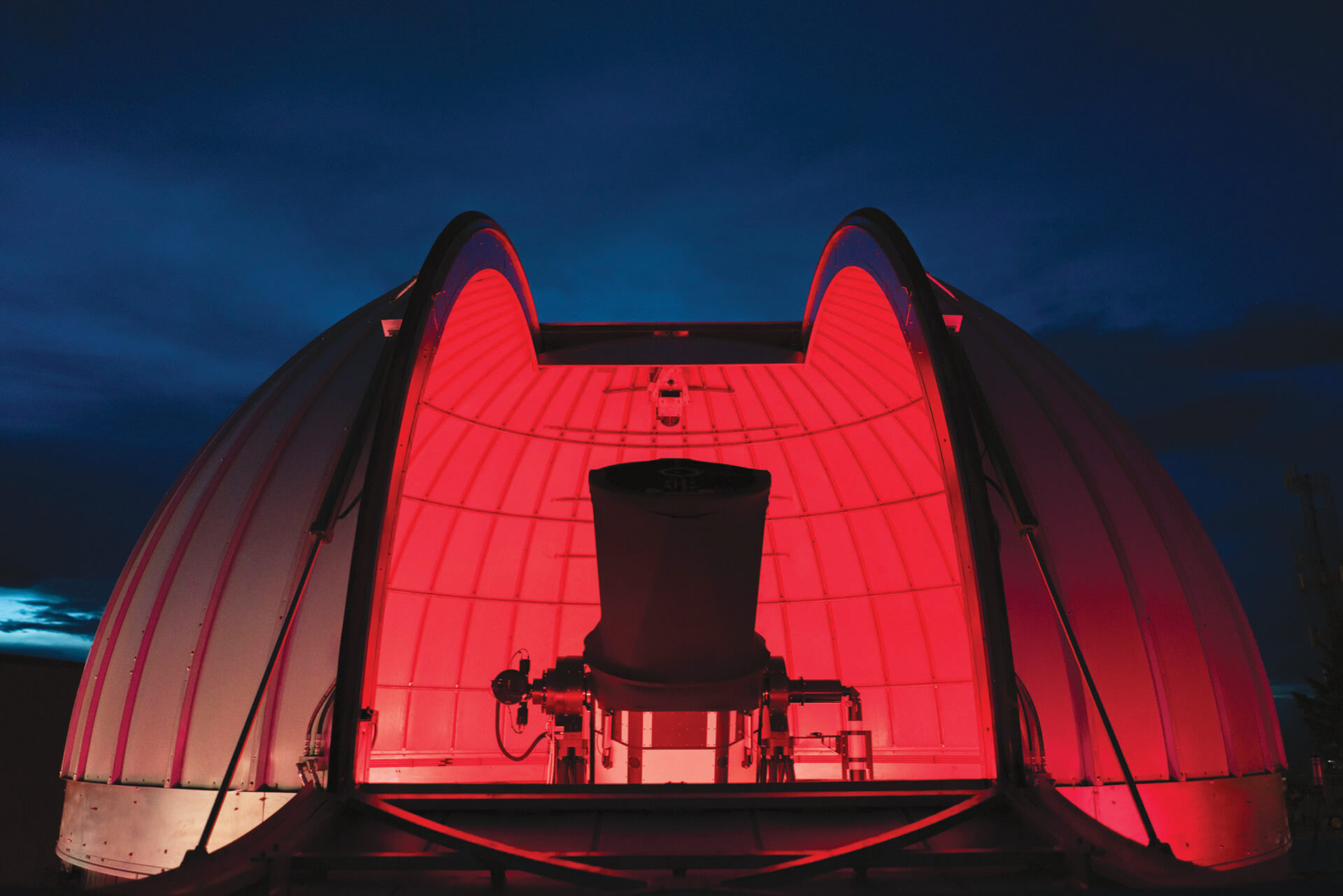
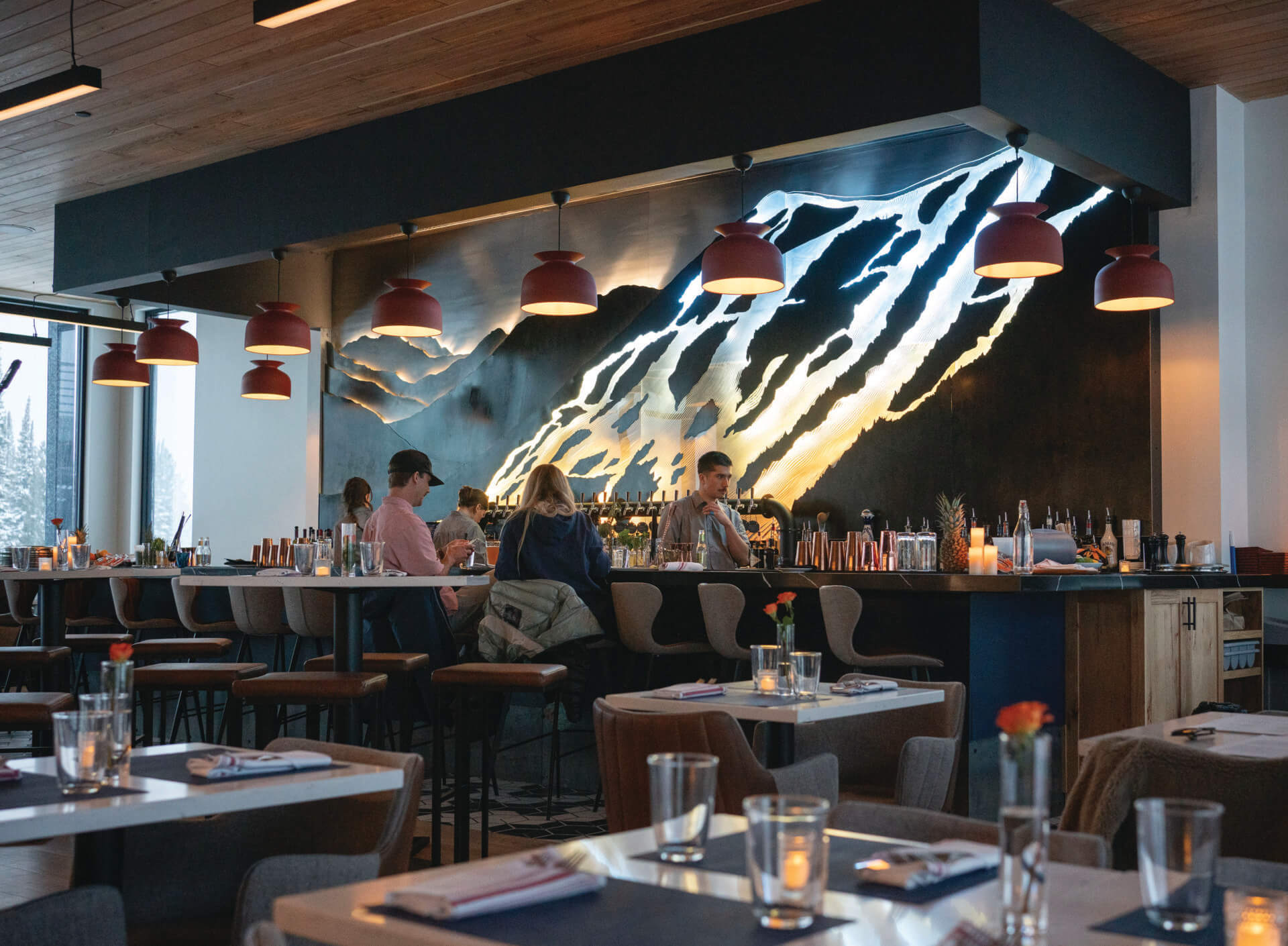
In addition to the main restaurant, there’s a 2,300-square-foot rooftop deck where you can get beverages and order from a casual menu of small plates. Both are open during the day and evening. Lunch in the restaurant, which has a traditional inside space with four walls and also space covered (or not) by a retractable roof, offers sandwiches, salads, grain bowls, and pasta. Aurora’s executive chef, Brandon Hicks, an alumnus of the kitchen at New York’s Michelin-starred Picholine, describes the dinner menu as “fine dining, but not alienating. It’s approachable food,” he says. “There are refined options like yellowtail tartare, and also a Wagyu burger.” There are 24 beers on tap and a seasonal cocktail program developed by food and beverage director Nicholas Berti, who hails from Florence, Italy.
In the same building is a coffee bar that serves pastries, coffee (using beans from Great Northern Coffee Company), and espresso drinks (from Lavazza espresso)—it’s the perfect place to rest and recover after a daytime hike up the resort, which is part of the Bridger-Teton National Forest. (The trail climbs about 1,500 vertical feet over two miles.)
“I started working on the planning for everything on the summit 12 years ago,” says Snow King general manager Ryan Stanley. “Now it’s all finished and time for everyone to enjoy it. For a small ski area, the diversity of summit experiences makes us unique.”
Reserve a visit to SKOP at snowkingmountain.com and make reservations for Aurora at resy.com. There are also combined SKOP/Aurora experiences available at snowkingmountain.com. Both SKOP and dinner reservations at Aurora include a ride up and down on the Snow King Gondola. Aurora has a 10-seat bar available for walk-ins, and this does not include a free gondola ride. JH

